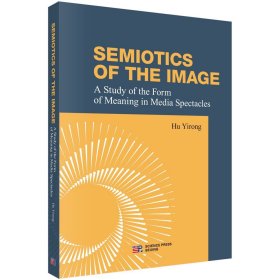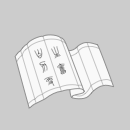
图像符号学:媒介景观的意义形式研究
全新正版 极速发货
¥ 87.4 6.8折 ¥ 128 全新
库存8件
作者胡易容
出版社科学出版社
ISBN9787030785503
出版时间2024-05
装帧平装
开本其他
定价128元
货号1203293616
上书时间2024-09-07
- 最新上架
商品详情
- 品相描述:全新
- 商品描述
-
目录
Table of Contents
Chapter 1 Introduction: From Image to Spectacle 1
1.1 The Image Age and Theories of the Image 1
1.2 Semiotics as the Methodology to Master Media Spectacles 5
1.3 Main Areas of Iconicity 8
1.3.1 The Importance of Iconicity (像似性, xiangsixing) 8
1.3.2 Iconicity in Linguistics 10
1.3.3 Verbal Icons in Literature and General Images in Contemporary Media 12
1.4 Research Scope and Development 14
Chapter 2 Sign and Image 18
2.1 Sign and the Pedigreeof Image 18
2.1.1 Sign 18
2.1.2 Image 27
2.1.3 Motivation 41
2.2 Image as an Icon 49
2.2.1 An Icon Not Necessarily an Image 49
2.2.2 Degree of Iconicity 51
Chapter 3 Transparent Languages 65
3.1 Terms and Concepts 65
3.1.1 The Semiotic Logic of the Word Sources of象,像, and 相 67
3.1.2 Word Formation and Terminology Generation 76
3.1.3 Major Discussions of Linguistic Iconicity 80
3.2 A Universal Language 86
3.2.1 Symbolic Evolution 87
3.2.2 The Utopia of Language 88
3.2.3 Language Differentiation 93
3.2.4 Perfect Signs 96
Chapter 4 Verbal Icon 105
4.1 A General Introduction to Verbal Icon 106
4.1.1 Descriptive Verbal Icon 109
4.1.2 Metaphor and Symbolic Verbal Icon 114
4.2 From Verbal Icon to Fuxiang 119
4.2.1 The Tradition and Meaning Evolution of Fuxiang 120
4.2.2 Cross-media Rhetoric 123
4.3 Cross-Media and Image Narrative 132
4.3.1 Dilatation of Narratology 133
4.3.2 Image and Minimal Narrative 138
Chapter 5 Art Images 151
5.1 The Dimension of Humanities 152
5.1.1 Panofsky and Cassirer 152
5.1.2 Text of Art Sign 156
5.2 Perspective and the Code of Proportions 161
5.2.1 “Perspective” as a Code: Self-contained Codability of Decoding 161
5.2.2 Coordination of Perspective Code 163
5.2.3 Artistic Representation and Transcendence of Perspective 167
5.3 The Evolution of Art 171
5.3.1 Semiotic Attributes of Artistic Images 172
5.3.2 From Imitation to Representation 174
5.3.3 Representation and Expression 177
5.3.4 Artistic Consciousness 183
Chapter 6 Simulacrum 193
6.1 Image and the Self 194
6.1.1 The Development of Image Theory 194
6.1.2 Reflexive Image 202
6.2 Simulation 209
6.2.1 “Pseudo-environment” and Semiotic “Authenticity” 211
6.2.2 The Truth of Advertising, Journalism and Literature 218
Chapter 7 The Cultural Spectacle 230
7.1 The Articulate World 230
7.1.1 Platonic Representation231
7.1.2 The Four Natures 236
7.1.3 The Discipline to Which the Image World Belongs247
7.2 Thinking in Sign in Chinese Culture 252
7.2.1 Xiang (象): The Imitation of the Universe in Ancient China 252
7.2.2 Yixiang (意象): The Image Evolution of the Chinese Cultural System 253
7.2.3 Chinese Aesthetic Pursuit Derived from Yixiang258
Notes 268 References 270
Part I: English References 270
Part II: Translated References (Chinese Editon) 274
Part III: Chinese References 278
Postscript 282
内容摘要
符号学经过一个世纪三代学者的努力,已经发展成一门非常精密的学科,接近于人文-社会学科的数学。"图像时代"的符号学解释正在成为一个当代传媒文化重要的新兴领域,两者的结合具有巨大理论操作空间。图像符号学将作为传播学的重要课题得到重视和深入研究。本研究所要讨论的主要对象是"符号像似机制与当代以视觉图像为主导的文化文本"。这是一个巨大的跨学科跨领域的问题,但就其中的学科属性来说,是集中于符号传播领域。它以当代传媒文化中的符号、符号的组合(文本)为主要研究对象,在具体的文本案例上触及美学中的"艺象"、文学中的"语象"、哲学中的"现象"、数字图像以及各种新媒体语境下的"影像",还包括传统中华文化符号的当代数字人文传播。
相关推荐
-

图像符号学:媒介景观的意义形式研究
全新广州
¥ 87.40
-

图像符号学:媒介景观的意义形式研究
全新保定
¥ 88.30
-

图像符号学:媒介景观的意义形式研究
全新广州
¥ 87.40
-

图像符号学:媒介景观的意义形式研究
全新广州
¥ 87.47
-

图像符号学 媒介景观的意义形式研究
全新北京
¥ 86.15
-

图像符号学 媒介景观的意义形式研究
全新北京
¥ 86.15
-

图像符号学 媒介景观的意义形式研究
全新北京
¥ 86.15
-

图像符号学:媒介景观的意义形式研究
全新北京
¥ 77.76
-

图像符号学:媒介景观的意义形式研究
全新北京
¥ 101.10
-

图像符号学 媒介景观的意义形式研究
全新广州
¥ 87.47
— 没有更多了 —













以下为对购买帮助不大的评价